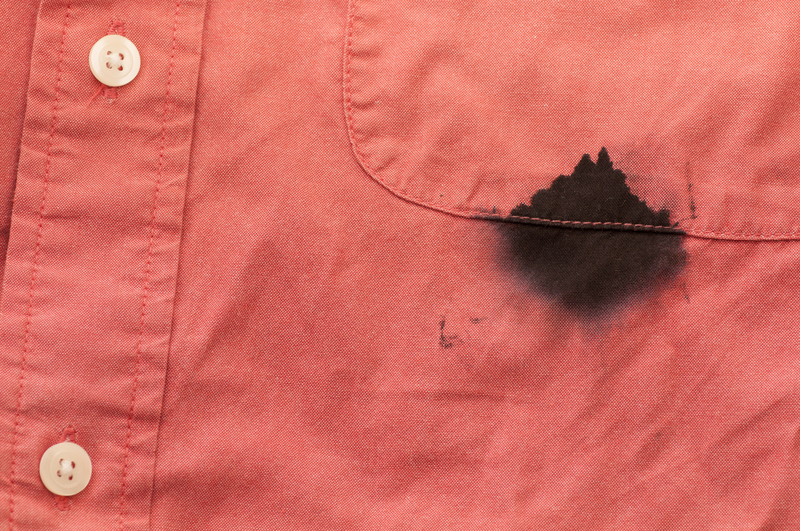Your Easy-Clean Solution for Enamel Oven Trays
Posted on 21/05/2025
Your Easy-Clean Solution for Enamel Oven Trays
Enamel oven trays have been a kitchen staple for decades, thanks to their remarkable durability, even heat distribution, and appealing glossy finish. However, like any frequently used cookware, they often fall victim to stubborn stains, greasy build-ups, and burnt-on food residue. Finding the perfect easy-clean solution for enamel oven trays can feel daunting, but with the right techniques, keeping your enamel bakeware spotless is simpler than you might expect.
Why Choose Enamel Oven Trays?
Before diving into cleaning strategies, let's briefly explore why enamel trays are such a popular choice for both amateur cooks and professional chefs:
- Durability: Enamel-coated trays resist chipping, rusting, and scratching for long-lasting use.
- Non-reactive Surface: Enamel is nonporous, which means it won't react with acidic or alkaline foods.
- Effortless Cleaning: The glossy surface helps prevent food from sticking, making clean-ups easier.
- Versatile: Suitable for baking, roasting, and even serving directly from oven to table.
With these advantages, it's no wonder that so many households rely on enamel oven trays for daily cooking tasks. But what about when things get messy?

Understanding the Challenges: Why Oven Trays Become Hard to Clean
No matter how diligent you are, eventually every oven tray will accumulate a layer of charred grease and baked-on food. Some common causes include:
- Splashing from oily foods or marinades during roasting.
- High cooking temperatures that cause sugars and fats to caramelize and burn.
- Leaving residues to cool and harden before cleaning.
Over time, these factors can lead to stains and sticky residues that seem nearly impossible to remove with simple scrubbing.
The Ultimate Easy-Clean Solution for Enamel Oven Trays
Cleaning enamel oven trays doesn't have to be a headache. By following the right steps and using appropriate cleaning agents, you can restore your trays to their original shine--sometimes without any heavy scrubbing!
1. Start with Quick, Preventive Cleaning
After each use, practice quick and preventive cleaning to stop residues from hardening:
- Let the tray cool slightly, but don't wait too long--warm trays are easier to clean.
- Rinse with hot water: Immediately run hot water to loosen food particles and grease.
- Wipe with a soft sponge: Avoid abrasive pads which can harm the enamel.
- Dry thoroughly to prevent water spots or rust at any exposed edges.
This quick care routine will keep your enamel oven trays looking great after every use.
2. The Baking Soda & Vinegar Method (A Classic!)
If you're facing tougher stains or baked-on bits, a simple combination of baking soda and vinegar often delivers impressive results. Here's how to use this time-tested easy-clean solution for enamel trays:
- Sprinkle a generous layer of baking soda over the entire tray, focusing on stained areas.
- Pour white vinegar over the baking soda. The fizzing reaction helps to break down grime.
- Let it sit for 15-30 minutes. For stubborn stains, extend the waiting time to an hour.
- Scrub gently with a non-abrasive sponge, then rinse thoroughly with hot water.
This natural, non-toxic solution harnesses the cleaning power of both ingredients--perfect for households seeking a healthier alternative to harsh chemicals.
3. Soak Overnight for Effortless Cleaning
For seriously tough grime, a long soak works wonders:
- Fill the tray with hot soapy water, using a small amount of mild dish detergent.
- Let it soak overnight or at least a few hours.
- Wipe away grime in the morning--residue should lift off much more easily.
Soaking is especially effective for older stains or if you forgot to clean your tray right after cooking.
4. Use a Paste for Stubborn Stains
If you still notice stains after soaking, try making a powerful paste:
- Combine baking soda with a few drops of water to form a thick paste.
- Apply directly onto the most stubborn stains on the enamel surface.
- Let it sit for 30-60 minutes before scrubbing gently.
Baking soda is only mildly abrasive, so it lifts stains while protecting the glossy finish.
5. The Power of Lemon Juice
Lemon juice is a natural degreaser and stain remover. Here's how to put its cleaning power to work for your enamel oven trays:
- Cut a lemon in half and rub the cut side over stained areas.
- Alternatively, mix lemon juice with baking soda and apply as a paste.
- Let it sit for 15-20 minutes before rinsing clean.
This method also leaves your tray with a fresh, natural scent!
What to Avoid When Cleaning Enamel Oven Trays
- Do not use steel wool or harsh scouring pads; these can scratch and dull the enamel coating.
- Avoid bleach or caustic oven cleaners unless specified by the manufacturer; they may degrade the enamel over time.
- Don't bake or broil while the tray is dirty: excess build-up can harden further and become even more stubborn.
- Never subject to extreme temperature changes (like plunging a hot tray into cold water), as this can cause cracking.
Best Store-Bought Cleaners for Enamel Oven Trays
If you prefer commercial cleaning products, several brands make sprays and creams specifically for enamel cookware. Look for labels that state "safe for enamel surfaces" or are non-abrasive.
- Cream cleaners with micro-particles: These gently lift grime without scratching.
- Non-toxic spray degreasers: Brands like Method, Ecover, and others offer plant-based options.
- Paste-style cleansers: Popular for tougher jobs, but use sparingly and avoid heavy scrubbing.
If you have doubts, always test your chosen cleaner on a small, inconspicuous area first.
Top Tips for Maintaining Spotless Enamel Oven Trays
Keeping your trays in pristine condition is easier when you mix prevention with effective cleaning. Try these kitchen-tested tips for long-term enamel care:
- Use baking parchment or silicone mats to line trays before roasting sticky or greasy foods.
- Remove food debris quickly, preferably before residue dries and hardens.
- Avoid stacking trays when not fully dry to prevent trapped moisture and chipping.
- Store carefully: If stacking is necessary, place a soft cloth or paper towel between trays to protect the glossy surface.
- Check the manufacturer's care instructions for any unique guidance per brand.

Restoring Old or Heavily Stained Enamel Oven Trays
Even well-loved trays sometimes succumb to years of burnt-on food and discoloration. But don't give up hope! With a little patience and elbow grease, you can rejuvenate your enamel oven trays and give them a new lease on life.
Deep-Clean Restoration Process
- Soak the tray overnight in warm, soapy water to loosen as much residue as possible.
- Apply a baking soda and vinegar paste liberally to stains and let sit for several hours.
- Use a plastic or silicone scraper to gently lift off loosened grit.
- Repeat if necessary, focusing on the most affected areas.
- Rinse thoroughly and dry to restore the enamel's brilliant sheen.
If your enamel tray is showing signs of physical damage--such as chips or cracks--consider whether it's safer to replace it, especially if the underlying metal core is exposed.
Frequently Asked Questions About Cleaning Enamel Oven Trays
- Can I put enamel oven trays in the dishwasher? Many enamel trays are dishwasher safe, but hand washing is gentler and extends tray life. Always check manufacturer recommendations.
- Are enamel trays non-stick? They're naturally less sticky than uncoated metal, but they can't compare to modern non-stick coatings. Light oiling or parchment lining helps prevent sticking.
- Is it safe to use baking soda and vinegar on colored enamel trays? Yes, these classic natural cleaners are safe for most colored enamels, but avoid abrasive scrubbing to preserve color vibrancy.
- Do burnt stains mean I need to replace my tray? Not usually! Even heavily burnt stains can often be removed with repeated soaking and gentle scrubbing. Only replace trays with severe chipping or cracks.
- How often should I deep-clean my enamel trays? For frequent bakers, a deep clean every month keeps trays in top shape. Light, regular cleanings after each use minimize the need for heavy-duty efforts.
Eco-Friendly Cleaning Tips for Conscious Cooks
Modern kitchens are increasingly focused on eco-friendly cleaning methods not only to protect health but also the environment. Luckily, the majority of effective solutions for enamel oven tray cleaning are already green, including:
- Baking soda and vinegar: Biodegradable, non-toxic, and inexpensive.
- Lemon juice: Refreshingly natural and effective.
- Reusable cleaning cloths: Reduce paper towel waste.
Avoid single-use plastic scrubbers and invest in sturdy sponges or silicone brushes for the most sustainable cleaning routine.
The Bottom Line: Enjoy Sparkling Enamel Trays with Less Effort
Choosing enamel oven trays means investing in cookware that's both practical and attractive. With a thoughtful cleaning routine, the right tools, and a few time-saving tricks, you'll extend the lifespan of your trays and keep them looking like new--meal after meal.
To recap, the best easy-clean solution for enamel oven trays is a mix of regular maintenance, prompt cleaning, and periodic deep-cleans using either natural or gentle commercial products. Protect your enamel by avoiding harsh chemicals and abrasive scrubs. With these simple steps, your enamel trays will stay gleaming, hygienic, and ready for whatever delicious recipe comes next!
Ready to enjoy the ultimate in cooking convenience? Embrace these expert tips and make your enamel oven trays the centerpiece of a happy, healthy kitchen!




